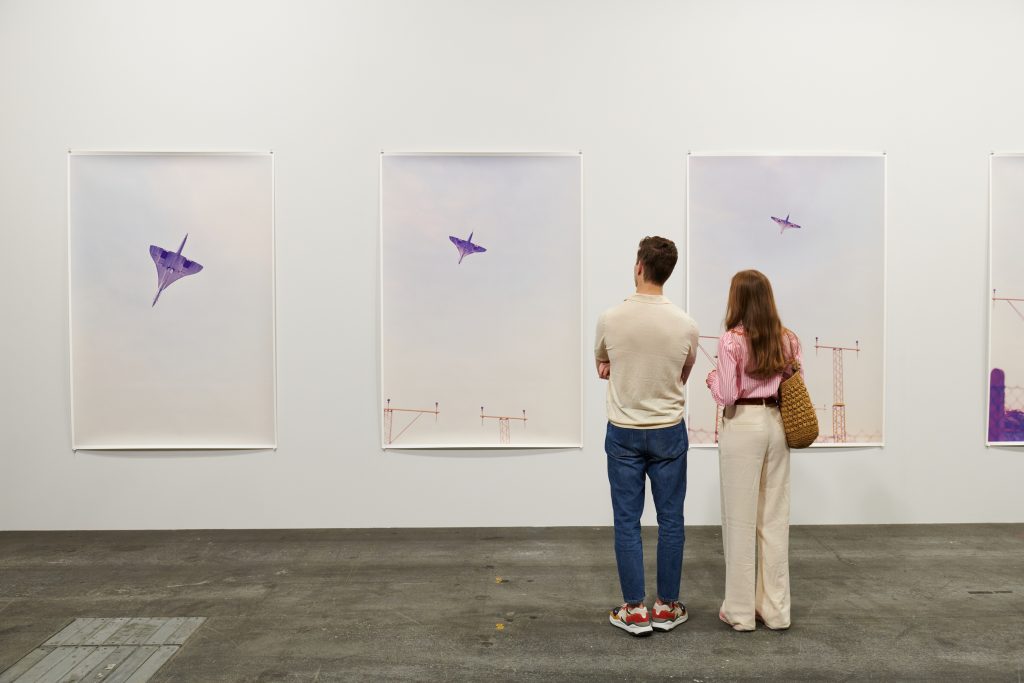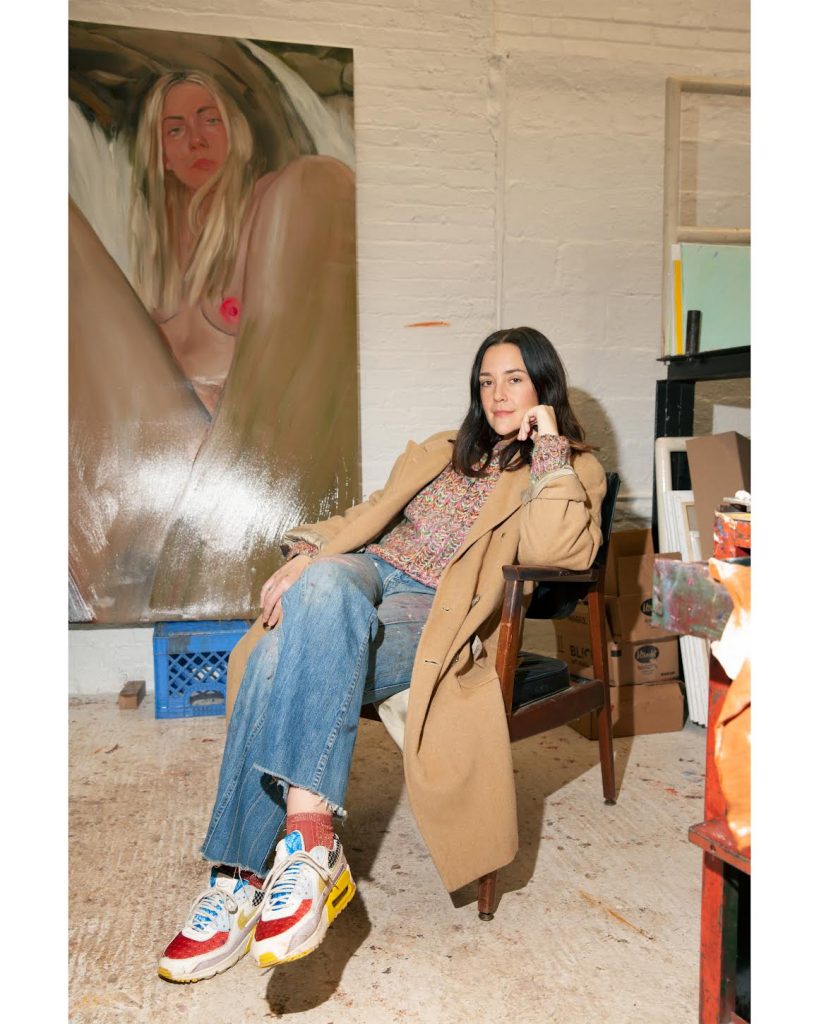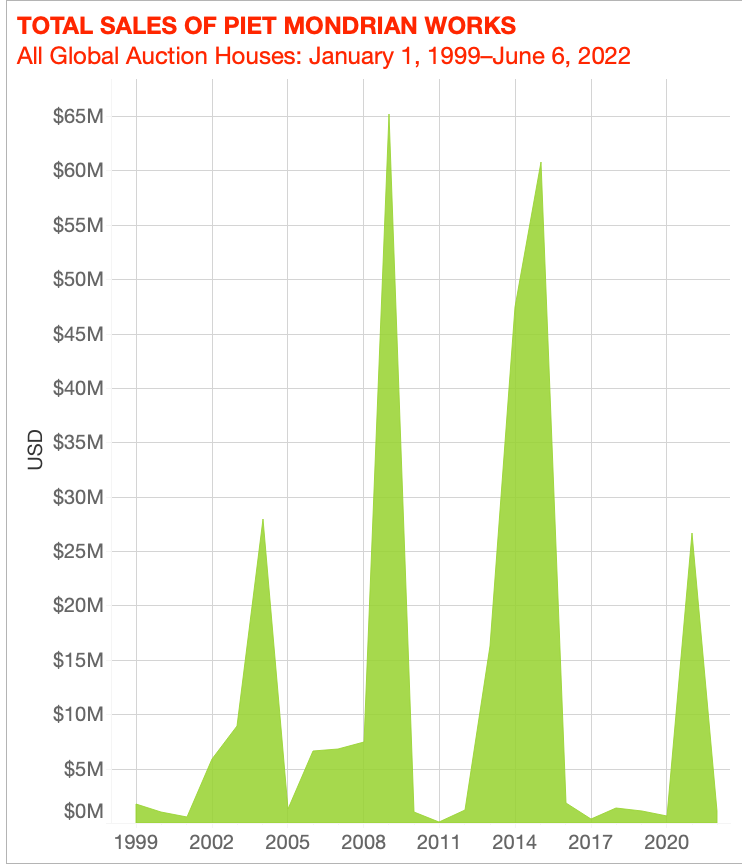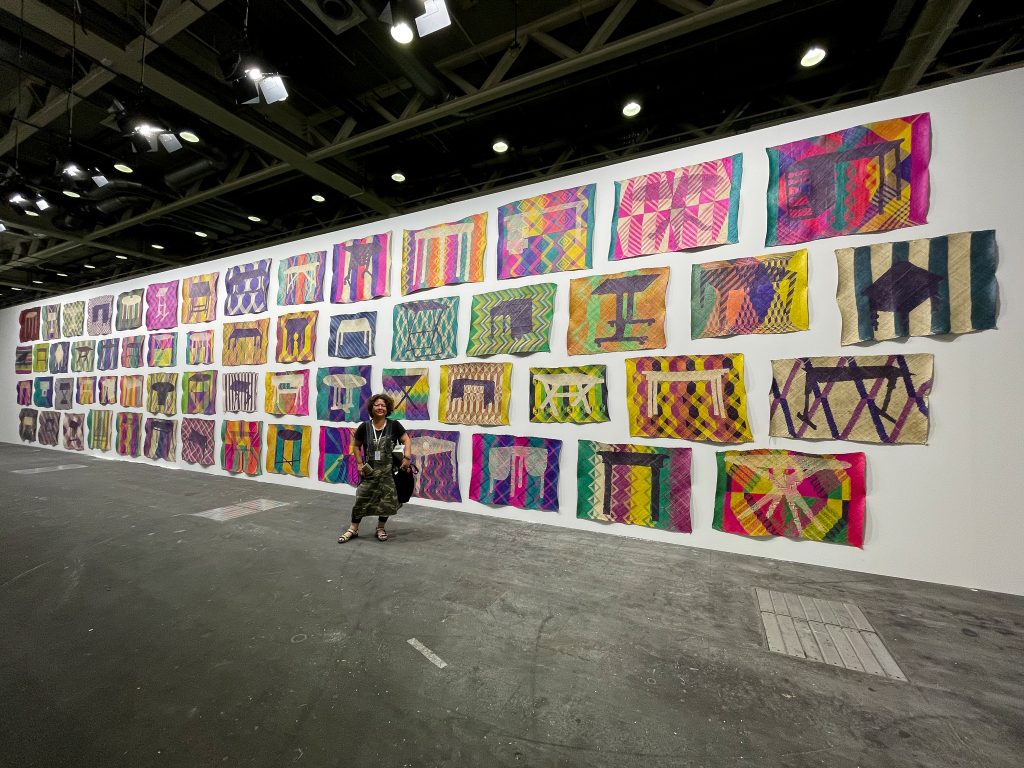The Back Room
The Back Room: Basel Beckons
This week: A breakdown of the biggest themes at Art Basel, Mondrian’s wonky market, a big moment for the Southeast Asian scene, and more.

This week: A breakdown of the biggest themes at Art Basel, Mondrian’s wonky market, a big moment for the Southeast Asian scene, and more.

Julia Halperin &
Naomi Rea

Every Friday, Artnet News Pro members get exclusive access to the Back Room, our lively recap funneling only the week’s must-know intel into a nimble read you’ll actually enjoy.
This week in the Back Room: A breakdown of the biggest themes at Art Basel, Mondrian’s wonky market, a big moment for the Southeast Asian scene, and much more—all in a 7-minute read (1,877 words).
________________________________________________________________________________________

Wolfgang Tillmans, Concorde L449-19, 21, 22, 23, 25, 27, 28 (1997). Galerie Buchholz, David Zwirner. Courtesy Art Basel.
Art Basel returned to the Messeplatz in its traditional summertime slot for the first time in three years. VIP activity was strong—but as art market players toasted a quasi return-to-normal, stock markets cratered, cryptocurrency prices nosedived, and inflation rates continued to skyrocket.
Reports from the fair’s opening days indicate that galleries have yet to directly feel the recession coming downwind, but some players already appear to be anticipating a new reality.
Here are five key takeaways from the week.
Art Basel is one of the few fairs where art is routinely traded for prices in the seven and even eight figures. Here are a few of the nosebleed-level transactions reported by galleries.
In the early hours of the VIP preview, gallerists expressed pleasant surprise about the return of Asian and U.S. collectors, who were conspicuously absent from Art Basel’s last edition nine months ago. Mera Rubell, Qiao Zhibing, Timothy Tan, and Richard Chang were among those spotted roaming the aisles.
Art Basel’s newly relaxed participation requirements for galleries meant there were 19 first-timers among the fair’s 289 exhibitors. Most of them were younger, including the Paris and Chicago-based Mariane Ibrahim and Proyectos Ultravioleta from Guatemala City. The crowd at the jam-packed First Choice VIP opening also included many younger faces, some of whom were unfamiliar to the pre-pandemic fair circuit.
The yen for work by emerging artists accelerated during the pandemic, with speculative buying pushing up prices at auction and many blue-chip galleries adding younger talents to their stables. This trend was more evident than ever on the ground floor of the fair, which is usually reserved for blue-chip and historic fare.
Most of the frenetic energy focused on trendy young artists, while bigger-ticket classics were slower to move (unless they were sales that had been arranged in advance). Still, despite complaints that some secondary-market inventory was not fresh enough to market, dealers managed to sell with lucrative markups.
While the sky-high prices and continued demand for young art look like positive indicators, there are signs that a recalibration is in the offing.
Historically, recession hasn’t always been a bad thing for the art market: people want to move money into tangible assets and many bet on art as a hedge against inflation.
So while it is unlikely that collectors will stop buying art altogether, there may well be a sea change in the kind of art they are buying. Research suggests that material in the $100,000-to-$1 million price range by established brand names is the most recession-proof. What does that mean for work by artists only a few years out of school who are currently trading on the secondary market for $3 million? Only time will tell.
________________________________________________________________________________________

Jenna Gribbon. Photo by Annie Klebanoff.
In this week’s Wet Paint, sought-after painter Jenna Gribbon joins LGDR (which kicked off Art Basel with the $70,000 sale of one of her paintings to an SFMOMA board member), and a glitch in Basel’s VIP card system caused a bit of a crush during the fair’s swanky preview.
Here’s what else made a mark around the industry since last Friday morning…
Art Fairs
Auction Houses
Galleries
Institutions
NFTs and More
________________________________________________________________________________________

© 2022 Artnet Worldwide Corporation.
The Fondation Beyeler’s marquee exhibition during Art Basel, “Mondrian Evolution” (through October 9, 2022), has left many reflecting on the legacy of Piet Mondrian. For an artist as influential as the Dutch painter, his market is extraordinarily uneven. We dug into the Artnet Price Database to find out why.
The takeaway? Renewed emphasis on the artist’s earlier material—clear in both the Beyeler show and a major exhibition at the Hague in 2017—suggests there may be room to grow in this segment of the artist’s market.
Yet supply, as ever, is the biggest problem. A lawsuit filed by Mondrian’s heirs against the Philadelphia Museum of Art last year offers a ballpark for how high the price for prime work could go: they claim the lozenge-shaped Composition With Blue (1926) is worth $100 million. Not bad for an artist who for years made flower compositions to pay for the radical experiments no one wanted to buy.
________________________________________________________________________________________
“Everything is fake, everything has been stolen. It’s frightening, and I hope justice prevails.”
—Jean-Claude Gandur on the scandal-plagued antiquities market. The Swiss collector believes he was duped into buying an Egyptian Fayum portrait in 2014 that now appears to have ties to the smuggling ring that ensnared former Louvre director Jean-Luc Martinez. (Artnet News)

Kota Kinabalu-born-and-based artist Yee I-Lann and her work Tikar/Meja at Unlimited, Art Basel, Switzerland. Courtesy of Silverlens.
________________________________________________________________________________________
Date: 2022
Seller: Silverlens
Asking Price: In the range of $200,000
Buyer: National Gallery of Victoria Melbourne
Sold at: Art Basel
________________________________________________________________________________________